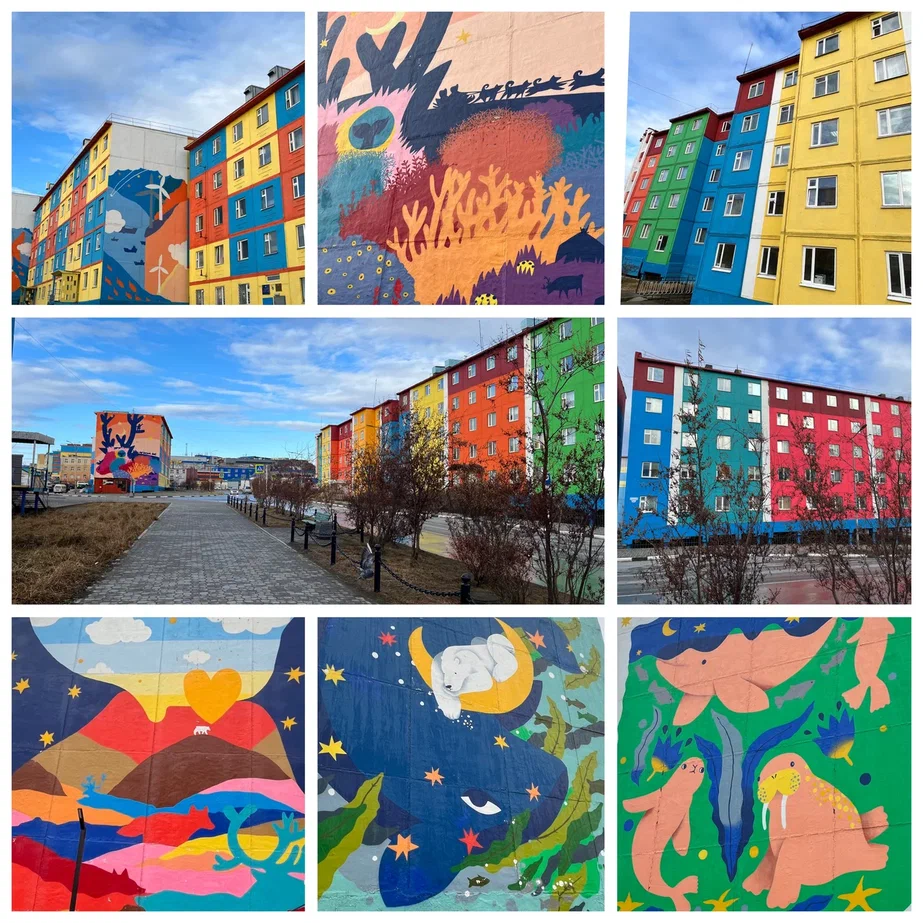Dr. Davydova
Research Fellow, Arctic Research Center,
Museum of Anthropology and Ethnography, Russian Academy of Sciences
The Chuvans. Surrounding society and the main economic activity of the region of residence
Due to Chukotka’s unique nature, climate, and geography, its economy is based on a combination of high-tech extracting industry and traditional occupations of Chukotka’s indigenous peoples (i.e., reindeer herding, sea-hunting, fishing, etc.)
Chukotka ranks first among Russia’s Arctic regions in industrial manufacturing dynamics with a growth of 102.5% (per Russia’s Statistics Agency). Over eight months of 2023, the regional indicators of precious metals, solid fuel, and natural gas production grew compared to the same period in 2022.
Currently, the region is developing six gold deposits, with Mayskoye and Kenkura being the largest. Lode gold is being mined by five large enterprises, and alluvial gold is being mined by 20 crews. As of September 1, 2023, Chukotka’s enterprises mined 15.2 tons of gold, which is 5% more than the year prior. Silver mining grew by 13.5% to 74.3 tons over eight months. The coal industry is developing the Bering stone coal basin with the Alkatvaam and Amaam deposits. One new key project is the Baim ore zone rich in copper and gold. Local authorities expect this extraction project to become the flagship of the copper industry as it uses cutting-edge equipment and technologies.
Chukotka’s manufacturing capacities have a large budget as freight shipping is very expensive. Freight around the Chukotka autonomous district is mostly shipped by sea (from late July to early November) and air (all year round).
The area has nine airports with the largest located in Anadyr (in the village of Ugolnye Kopi) and Pevek. The Anadyr International Airport is the hub for all the flights between Moscow, Khabarovsk, Yakutsk, Magadan, Vladivostok, and Petropavlovsk-Kamchatsky, and all settlements in the Chukotka autonomous area. In the internavigational period, various freight from Russian cities are shipped to Anadyr by air. Year-round helicopter flights connect the city with the airport, an ice crossing operates in winter, while motor boats and small-size vessels run in summer.

Anadyr’s port, 2023.
Chukotka’s maritime transportation systems include five ports: Pevek in the East Siberian Sea and Provideniya, Egvekinot, Anadyr, and Beringovsky on the Bering Sea coast. Anadyr’s port has the region’s largest freight turnover, and in the navigation season, it receives ships from Petropavlovsk-Kamchatsky, Vladivostok, Magadan, Nakhodka, while its stevedoring companies ship freight from Murmansk and foreign states along the Northern Sea Route.
Chukotka’s agriculture is underdeveloped owing to the region’s climate. It has a small agricultural area of 7.700 ha (or 0.01% of its territory). The planting area in Chukotka is very small (less than 100 ha) and is entirely devoted to potatoes and vegetable crops. However, the amount of harvested crops is getting progressively larger, and the harvest in Anadyr is expected to be 216 tons of vegetables at year-end 2023, and 256 tons in 2024. Poultry farming came to play an important role in the region’s economy when a poultry farm was opened in Anadyr in 2001.
Oksana O. Kolomiets argues that in 2019, the region had 29 farms that grow vegetables in open ground and in greenhouses, are engaged in caged-animal farming, pig farming, poultry farming, reindeer herding, processing fish and meat, and other types of farming.
The indigenous population is engaged in its traditional occupations. Reindeer herding is the backbone of Chukotka’s agricultural sector. Chukotka’s reindeer herds have some the world’s largest head counts. In 2000, the region had 23 reindeer herding enterprises and over 30 reindeer farms. By 2013, 16 had remained including the largest one called Chukotka’s First Revolutionary Committee (the Anadyr district) with 26.200 head; then came Amguema (the Iulta district) with 23.200 head, Chaunskoye (the Chaun district) with 22.700 head, Kanchalansky (the Anadyr district) with 22.400 head, Pioner (the former Shmidtovsky district) with 14.700 head. In 2019, the reindeer herding sector in the Chukotka autonomous area employed about 630 persons working at 17 reindeer herding enterprises (including three farms and eight breeding farms) grazing a total of 154.169 domestic reindeer.
The food industry is based on commercial fishing and crabbing. The sector has several enterprises, with the fish processing plant in Anadyr and the Provideniya Fish Company state-owned farm (engaged in whaling) being the largest. Manufacturing is frequently located close to fishing grounds, which makes for the highest quality. In addition to fish, the area manufactures meat, dairy, and bread products. The principal enterprises are located in Anadyr, Pevek, and Bilibino. Many of them are multiproduct, which allows them to operate year-round. The region is becoming self-sufficient and progressively less dependent on food deliveries in the navigation season. Special programs additionally stimulate development, such as special economic conditions and expanding the advanced special economic zones (for instance, the Polyarny food complex).
Generally, the region’s economic development is geared toward qualitatively improving life standards, which is reflected in improving the living environment in northern cities and villages.

The colors of Anadyr, 2023.
























































